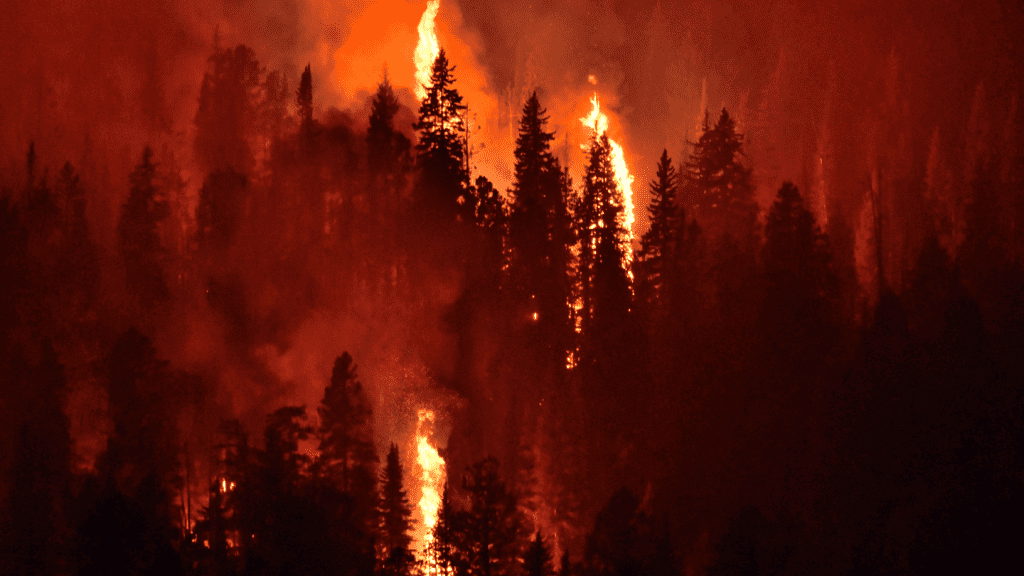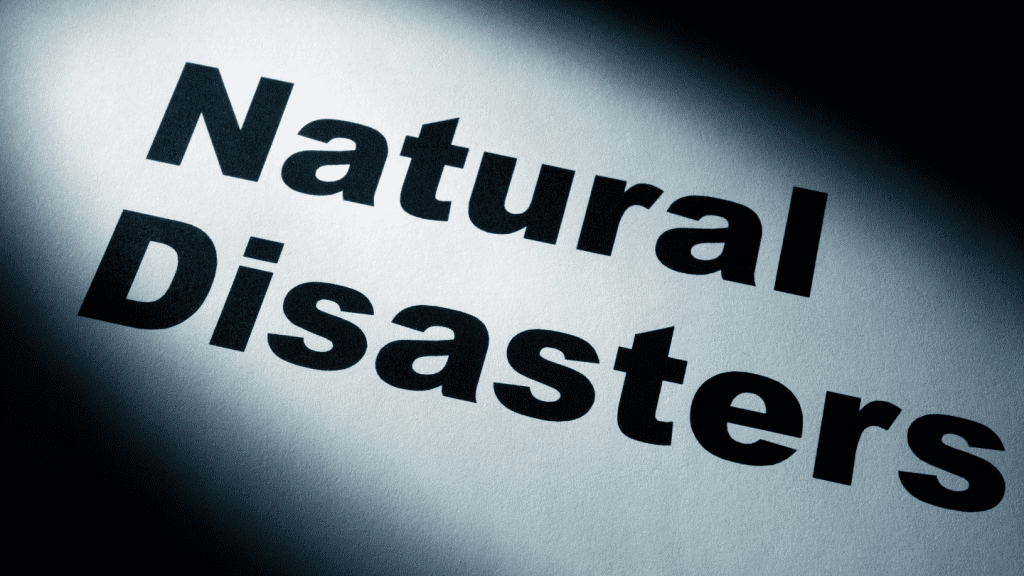Natural disasters are unpredictable events that can wreak havoc on homes, businesses, and entire communities. Understanding the different types of natural disasters and their potential impact is crucial for homeowners and business owners alike. This article aims to provide readers with a comprehensive list of natural disaster types that can cause significant damage, increasing awareness of potential risks.
At United Water Restoration Group, our team can assist you through any level of restoration! We understand that there are many natural disaster types that may damage a commercial or residential property. Our team is always ready to assist!
Natural Disaster Types
-
Earthquakes: The Ground-Shaking Threat
Earthquakes, one of nature’s most formidable phenomena, are characterized by the abrupt and intense shaking of the ground. This shaking is typically a result of the shifting and grinding of tectonic plates deep beneath the Earth’s crust. These movements can release vast amounts of energy, causing the ground to tremble, sometimes with devastating force. The aftermath of an earthquake can be catastrophic, leading to significant structural damage to buildings, bridges, roads, and other vital infrastructures. Such damages can result in enormous economic losses and, more importantly, the loss of human lives. Homes and businesses, especially those situated near active fault lines, are in the direct line of fire when these seismic events occur. For this reason, constructing buildings that are earthquake-resistant is of paramount importance. Additionally, having a well-thought-out emergency preparedness plan is crucial for individuals and communities to ensure safety and swift response during and after an earthquake.
-
Hurricanes and Typhoons: The Windy Onslaught
Hurricanes and typhoons, often referred to as nature’s furious whirlwinds, are colossal tropical storms that originate over warm ocean waters. These meteorological phenomena are distinguished by their ferocious winds, torrential downpours, and towering storm surges. The sheer force of these storms can inundate entire neighborhoods, causing homes to be submerged under water. The powerful gusts have the capability to uproot century-old trees, tear apart roofs, and shatter windows, leaving a trail of destruction in their wake. Coastal regions bear the brunt of these tempests, particularly due to the storm surges. These surges are elevated sea levels that are pushed ashore by the storm’s winds, leading to significant flooding. For communities residing along coastlines, the threat of hurricanes and typhoons is a recurring concern. It underscores the importance of robust infrastructure, early warning systems, and community preparedness to mitigate the devastating impacts of these cyclonic behemoths. 
-
Floods: The Rising Menace
Floods, often described as nature’s overwhelming deluge, stand as one of the most common and widespread natural disasters. These water-related catastrophes can be triggered by various factors, including extended periods of intense rainfall, the formidable storm surges from tropical cyclones or the abrupt discharge of water from reservoirs and dams. The inundation brought about by floods can swiftly submerge homes and commercial establishments, leading to extensive damage to property, invaluable possessions, and sometimes even invaluable historical artifacts. Particularly vulnerable are basements and ground-floor structures, which can quickly fill with water, causing structural damages and posing significant health risks due to potential contamination. The aftermath of flooding often requires extensive cleanup, repair, and in some cases, complete rebuilding. For those residing in flood-prone areas, it’s imperative to have preventive measures, such as elevated constructions, effective drainage systems, and emergency evacuation plans, to combat the menacing rise of floodwaters. If your property is experiencing storm damage, our team can assist!

-
Tornadoes: The Twisting Terror
Tornadoes, frequently dubbed as nature’s violent vortexes, are awe-inspiring yet terrifying atmospheric phenomena. These whirlwinds manifest as swiftly spinning columns of air that make contact with the Earth’s surface, leaving behind trails of devastation. The sheer velocity and power of tornadoes can result in roofs being ripped away from structures, windows being blown to smithereens, and even hefty vehicles being tossed into the air as if they were mere toys. The landscapes that bear the brunt of a tornado’s fury often resemble war zones, with debris scattered everywhere and structures reduced to rubble. For residents of areas known for frequent tornado occurrences, the threat is ever-present and demands constant vigilance. It’s of paramount importance for these individuals to have protective measures in place. This includes having a fortified safe room or an underground storm cellar, which can provide a sanctuary during the terrifying moments when a tornado rages overhead. Proper preparedness and awareness can make the difference between life and death when facing the wrath of these twisting terrors.
-
Wildfires: The Fiery Fury
Wildfires, often referred to as nature’s blazing wrath, are uncontrolled fires that can ignite with little warning, rapidly engulfing vast expanses of vegetation, residential areas, and commercial properties. These infernos are fueled by a combination of parched conditions, soaring temperatures, and gusty winds, creating a perfect storm for the flames to spread at an alarming rate. Homes and businesses, especially those nestled close to forests or brush-filled terrains, are at heightened risk. For such properties, it’s imperative to establish a defensible space—a buffer zone cleared of flammable materials—to slow or halt the fire’s progression. Additionally, having a well-structured evacuation plan is essential, ensuring that residents and workers can swiftly and safely retreat from the advancing flames when the situation demands. Here are some safety tips if you are in an area that is prone to wildfires.

-
Volcanic Eruptions
Volcanic eruptions, nature’s explosive displays of power, are events where mountains spout molten rock, ash, and noxious gases into the atmosphere. These eruptions can have far-reaching consequences. Ashfall, a common byproduct, can blanket vast areas, leading to structural damage, especially on rooftops. This ash can also contaminate water sources, posing health risks, and wreak havoc on aviation by clogging aircraft engines. Lava flows, while mesmerizing to behold, are deadly in their advance, scorching and obliterating everything they touch. For individuals residing in the shadows of active volcanoes, the threat is ever-looming. It’s essential for these communities to be well-informed about potential eruption signs, have clear evacuation pathways, and maintain emergency kits equipped with essentials to sustain them during such volatile events. Preparedness and awareness are the keys to navigating the challenges posed by these molten menaces.
Preparing for All Types of Natural Disasters
Awareness is the first step towards preparedness. By understanding the various natural disaster types and their potential impact, homeowners and business owners can take proactive measures to protect their properties and loved ones. Whether it’s securing structures, having an evacuation plan, or simply staying informed, every step counts in ensuring safety during these unpredictable events.
If you have experienced property damage from a natural disaster, our team of local experts can assist!





